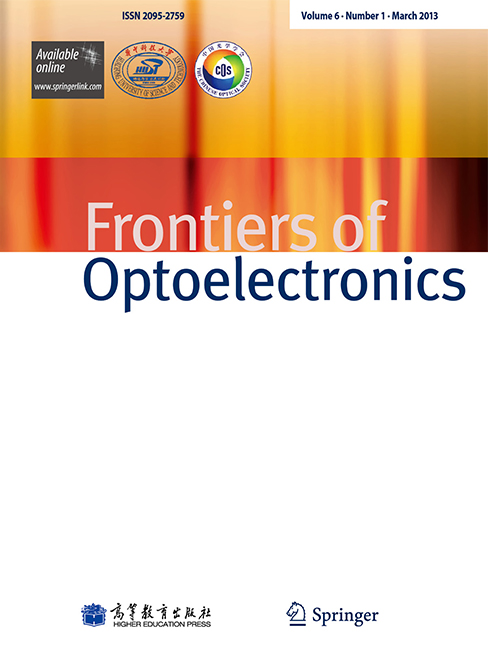 View fulltext
View fulltext
Terahertz (THz) waves, with the spectrum located between microwaves/millimeter-waves and infrared radiation, were historically difficult to be generated and detected and known as “terahertz gap”. However, Since the 1980s, the rapid development of semiconductor optoelectronics, ultrafast optics and ultrafast electronics has greatly promoted the research on generation, detection and application of THz waves. Many breakthroughs were achieved in the past decades, including high performance sources, sensitive detectors and interaction of THz wave with matters. THz waves have low photon energy and are non-ionizing. They can penetrate through most non-conductive materials. Many complex molecules have intra-/inter-molecule rotational or vibrational modes in THz frequencies. Due to these unique features, THz waves have great scientific value and have found an increasingly wide variety of applications in molecular fingerprint detection, diagnostic imaging, security and anti-terrorism, broadband communication, astronomical research, etc.
In this paper, we presented single mode terahertz quantum cascade lasers (THz QCLs) with sampled lateral grating emitting approximately 3.4 THz. Due to strong mode selection, the implementation of sampled lateral grating on THz QCL ridges can result in stable single longitudinal mode emission with a side-mode suppression ratio larger than 20 dB. The measured peak power of the grating laser is improved by about 11.8% compared to the power of devices with uniform distributed feedback gratings. Furthermore, the far-field pattern of the presented device is uninfluenced by grating structures.
Strong terahertz (THz) radiation provides a powerful tool to manipulate and control complex condensed matter systems. This review provides an overview of progress in the generation, detection, and applications of intense THz radiation. The tabletop intense THz sources based on Ti:sapphire laser are reviewed, including photoconductive antennas (PCAs), optical rectification sources, plasma-based THz sources, and some novel techniques for THz generations, such as topological insulators, spintronic materials, and metasurfaces. The coherent THz detection methods are summarized, and their limitations for intense THz detection are analyzed. Applications of intense THz radiation are introduced, including applications in spectroscopy detection, nonlinear effects, and switching of coherent magnons. The review is concluded with a short perspective on the generation and applications of intense THz radiation.
Developing efficient and robust terahertz (THz) sources is of incessant interest in the THz community for their wide applications. With successive effort in past decades, numerous groups have achieved THz wave generation from solids, gases, and plasmas. However, liquid, especially liquid water has never been demonstrated as a THz source. One main reason leading the impediment is that water has strong absorption characteristics in the THz frequency regime. A thin water film under intense laser excitation was introduced as the THz source to mitigate the considerable loss of THz waves from the absorption. Laser-induced plasma formation associated with a ponderomotive forceinduced dipole model was proposed to explain the generation process. For the one-color excitation scheme, the water film generates a higher THz electric field than the air does under the identical experimental condition. Unlike the case of air, THz wave generation from liquid water prefers a sub-picosecond (200 – 800 fs) laser pulse rather than a femtosecond pulse (~50 fs). This observation results from the plasma generation process in water. For the two-color excitation scheme, the THz electric field is enhanced by one-order of magnitude in comparison with the one-color case. Meanwhile, coherent control of the THz field is achieved by adjusting the relative phase between the fundamental pulse and the second-harmonic pulse. To eliminate the total internal reflection of THz waves at the water-air interface of a water film, a water line produced by a syringe needle was used to emit THz waves. As expected, more THz radiation can be coupled out and detected. THz wave generation from other liquids were also tested.
Materials, where charge carriers have a linear energy dispersion, usually exhibit a strong nonlinear optical response in the absence of disorder scattering. This nonlinear response is particularly interesting in the terahertz frequency region. We present a theoretical and numerical investigation of charge transport and nonlinear effects, such as the high harmonic generation in topological materials including Weyl semimetals (WSMs) and α-T3 systems. The nonlinear optical conductivity is calculated both semi-classically using the velocity operator and quantum mechanically using the density matrix. We show that the nonlinear response is strongly dependent on temperature and topological parameters, such as the Weyl point (WP) separation b and Berry phase fB. A finite spectral gap opening can further modify the nonlinear effects. Under certain parameters, universal behaviors of both the linear and nonlinear response can be observed. Coupled with experimentally accessible critical field values of 104 – 105 V=m, our results provide useful information on developing nonlinear optoelectronic devices based on topological materials.
There are a variety of elementary and collective terahertz-frequency excitations in condensed matter whose magnetic field dependence contains significant insight into the states and dynamics of the electrons involved. Often, determining the frequency, temperature, and magnetic field dependence of the optical conductivity tensor, especially in high magnetic fields, can clarify the microscopic physics behind complex many-body behaviors of solids. While there are advanced terahertz spectroscopy techniques as well as high magnetic field generation techniques available, a combination of the two has only been realized relatively recently. Here, we review the current state of terahertz time-domain spectroscopy (THz-TDS) experiments in high magnetic fields. We start with an overview of time-domain terahertz detection schemes with a special focus on how they have been incorporated into optically accessible high-field magnets. advantages and disadvantages of different types of magnets in performing THz-TDS experiments are also discussed. Finally, we highlight some of the new fascinating physical phenomena that have been revealed by THz-TDS in high magnetic fields.








